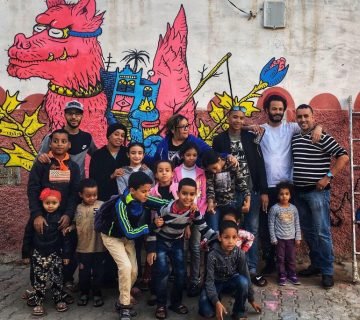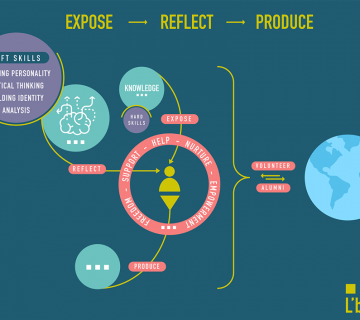omantic moments are one of the easiest memories to map. A beautiful date in a movie theater will change your perspective towards that movie theater forever. A horrible one can do the same as well. The person you’re sharing the date with triggers your sensitivity. It establishes a connection that makes every detail in the atmosphere count. The smell, the light, the noise, and even the subjects discussed become parts of a puzzle that is easy to put together. Sensitivity translated in the emotional state will bring you back to that moment every time you put your heart on a geographic location. The movie theater is no longer just a place to watch movies, but most importantly, the place where you felt a connection.
Connection is not only established between intellectual brains. In other words, it is not only capable of being established between two human beings. Connection can be made between an intellectual brain (human being) and a heart (a thing, an animal, a place). The definition of heart in this context goes beyond the muscle we know. Its metaphoric meaning can take countless shapes. A human’s heart in this sense is founded in the chemical reactions it has in response to external stimuli. The sky’s heart might be the sun or the moon. Fog’s heart can be rain or thunder or lightning. Earth’s heart can be a tree or a morning breeze. The heart can also be just a concept that doesn’t have any physical existence. The connection we feel towards a person or an object is established with their hearts; their essence. When a connection is made with the essence of someone or something, the memory created holds time on one hand and space on the other. A connection made with the essence is strong. A strong connection is an eternally engraved memory. The connection I had with my grandmother, who was diagnosed with Alzheimer’s before she died, is why she remembered me when she forgot her own children. The strength of our connection is why she could still remember my name and speak it when she could hardly open her eyes and move her tongue.
There is no such thing as a good or a bad piece of art, nor is there anything such as a strong or a weak piece of art. Every artistic expression, in any form, will succeed in touching some and fail with others. Furthermore, it may deeply touch some and change something within them, and at the same time go unseen by others.
A connection established with the aesthetic aspect of a piece of art is a weak connection, though. A strong connection is always established with the essence; with the heart of the piece. Walking down a street in specific emotional conditions and listening to a song that connects to your emotional state and causes you to burst into tears will forever add another layer to the image of that street. The song will always remind you of the street and your emotional state at the time. It will remind you of that day’s weather, the street’s smell and noise. The song may fail to bring back the same feeling, but it will remind you of the state you were in, both mentally and emotionally. That experience will eternally stand as a milestone of how you were, to be compared with how you are, and give you an idea of how you might be. Art doesn’t only portray a layer of the artist behind it. Art gives us a reflection of our deepest self. One’s exposition to the same piece of art over time can trigger different feelings (emotionally) and interpretations (intellectually). The change in feelings and interpretation reflects a layer of who we were, who we are, and who we are more likely to be. Art allows us to map our progress in time. Anything that happens alongside, before, or after the moment when that connection was being established hangs on to the memory of that connection. It floats every time the piece of art behind the establishment of the connection appears.
The verb to map applies on two dimensions: time and space. The connection art establishes with us can add another layer to a space and a time for us to have more details reminding us of the moment and the place the connection was made at. Alongside the connection, goes the ‘historical context”, which is all the surrounding details and events that become easy to remember just because they are related to a moment and a place, in which, a connection was made. As a result, mapping isn’t only a matter of space, but also time.
When we collect all the connections art pieces have established over time, we end up looking at a map of all the places that witnessed a beautiful moment of transcendence.
Edited by: Sally Jane Clarke




